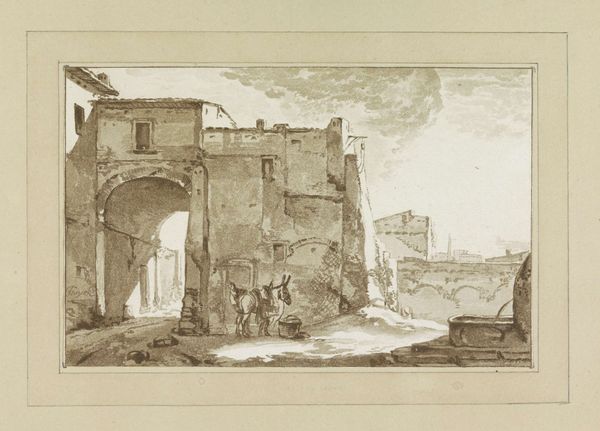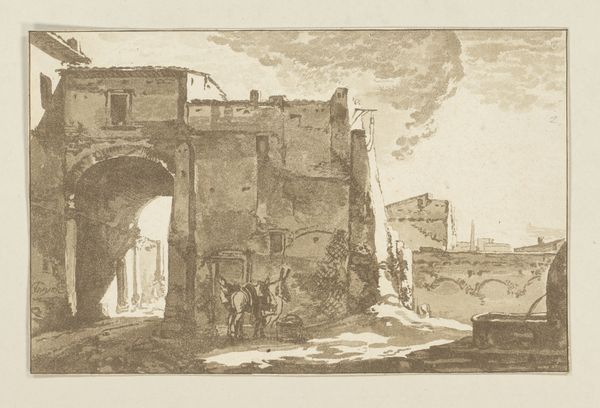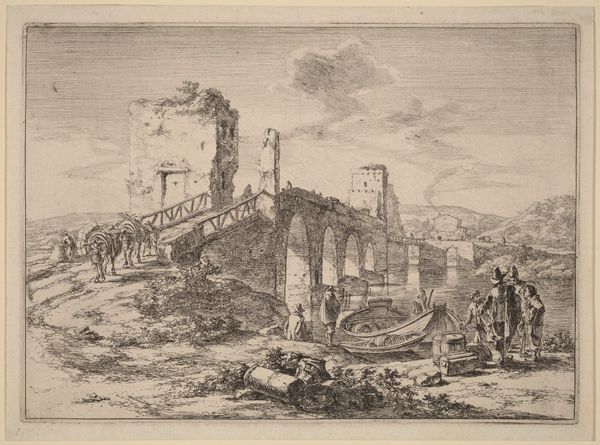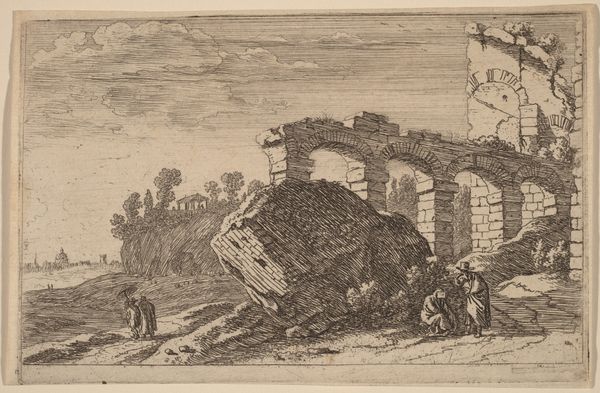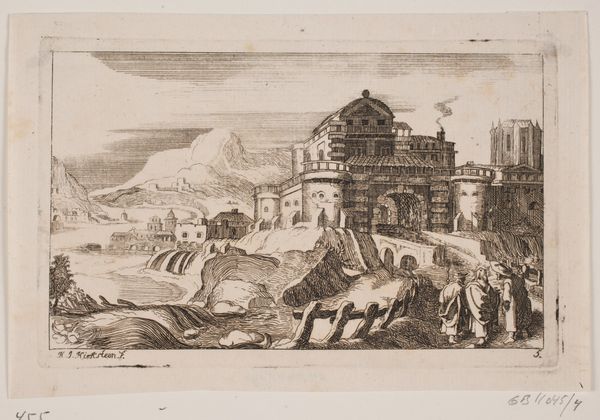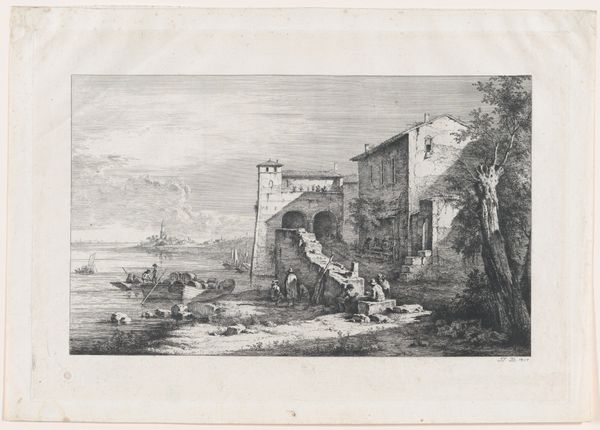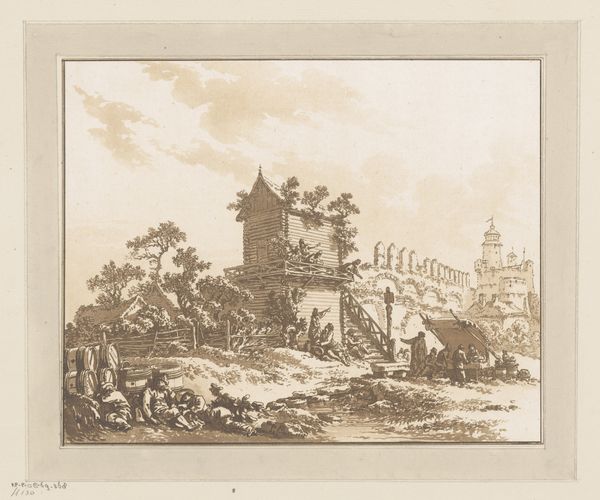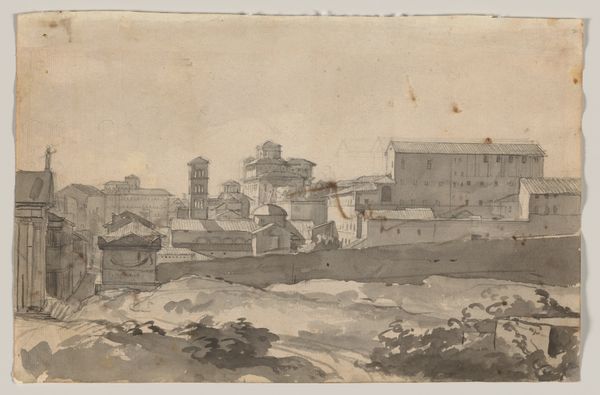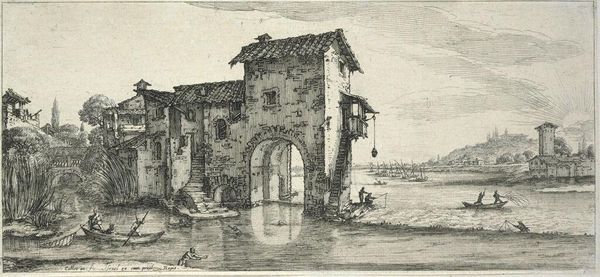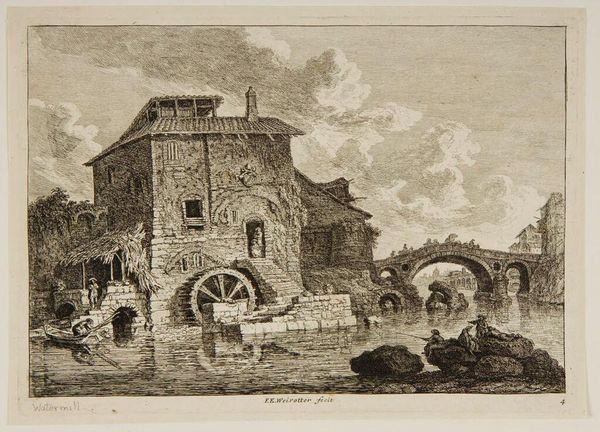
Reverse Copy of Le Moulin a Eau (The Water Mill), from Les Quatre Paysages (The Four Landscapes), plate 3 1620 - 1700
0:00
0:00
drawing, print, etching
#
drawing
#
baroque
# print
#
etching
#
landscape
Dimensions: Sheet: 6 7/16 x 11 1/4 in. (16.3 x 28.5 cm) Plate: 3 1/2 x 8 11/16 in. (8.9 x 22 cm)
Copyright: Public Domain
Editor: We’re looking at "Reverse Copy of Le Moulin a Eau (The Water Mill), from Les Quatre Paysages (The Four Landscapes), plate 3," made sometime between 1620 and 1700 by an anonymous artist. It’s a detailed etching. What strikes me is the contrast between the imposing architecture and the figures bathing so casually. How do you interpret this work? Curator: This scene captures a moment where the grand, constructed world meets the fluidity of nature, doesn’t it? The water mill itself, solid and seemingly permanent, stands as a testament to human ingenuity, a symbol of our control over the environment. Yet, water, the very thing that powers it, erodes and reshapes its surroundings, physically and metaphorically. Notice how the figures in the water are almost reclaiming the space. Do you see a tension there? Editor: Definitely. The building feels almost like a stage backdrop, while the figures bring an element of everyday life, even irreverence. It's like they are challenging the mill's dominance. Curator: Exactly! The water becomes a site of freedom and perhaps even purification, contrasting with the mill's association with labor and industry. The bathing figures aren’t just cooling off; they're participating in a ritual of renewal that predates the mill itself. This contrast speaks volumes about how we negotiate the forces of nature and culture. The symbol of water remains very important in art and many belief systems. Editor: That's fascinating, I hadn't thought about it that way. I appreciate how the image embodies the tensions of humans’ effect on the natural landscape. Curator: And the ways in which nature reclaims the human, always. Considering such dualities truly enrich our understanding of such visual landscapes.
Comments
No comments
Be the first to comment and join the conversation on the ultimate creative platform.
